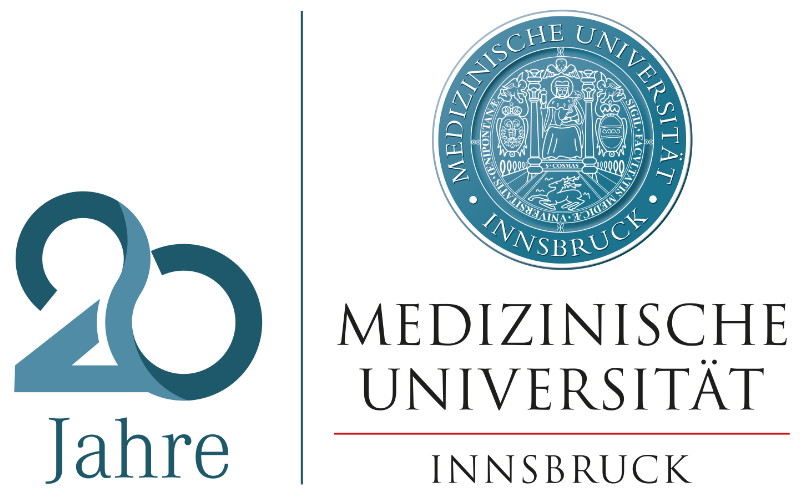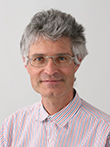
|
|
Markus NAGL Tel.: +43 (0)512 9003-70708 |
Biographical sketch
Associate Professor, MD - Specialist for Hygiene and Microbiology - Qualification as General Practitioner - Special qualification for Clinical Trials - Qualified Person for pharmaceutical quality management
Current Position
Associate Professor, MD
Education
| 2011 | Education in Pharmaceutical Quality Management, Qualified Person since 2012 |
| 2005 | Specialist for Hygiene and Microbiology |
| 2003 | Associate Professor for Hygiene and Microbiology |
| 2001 - present | University Assistant at the Division of Hygiene and Medical Microbiology, University of Innsbruck |
| 2000 - 2001 | Schrödinger Research Fellow at the University College London (The Rayne Institute) |
| 1998 | Diploma for clinical studies (special education) |
| 1997 - 1999 | Research assistant at the Institute of Hygiene, University of Innsbruck |
| 1997 | Qualification as General Practitioner |
| 1993 - 1996 | Medical training in general medicine, University Hospital of Innsbruck |
| 1992 - 1993 | Assistant at the bone marrow transplantation subunit of the Department of Internal Medicine, University Hospital of Innsbruck |
| 1992 | Military service at the Military Hospital of Innsbruck |
| 1991 | Graduation as Medical Doctor, University of Innsbruck |
| 1990 - 1991 | Thesis at the Institute of Hygiene, University of Innsbruck, Start with the continuous research on N-chlorotaurine and other chloramines |
| 1985 - 1991 | University of Innsbruck Medical School, Austria |
Projects
| KLI459-B30 FWF Stand alone Tolerability of inhaled N-chlorotaurine in humans – a phase I clinical study |
FWF | 2015-2017 |
Aganocides and N-chlorotaurine – preclinical studies |
NovaBay Pharmaceuticals, Inc. |
2010-2012 |
L313-B13 FWF Stand alone N-chlorotaurine applied to the bronchopulmonary system: tolerability and antiinfective properties |
FWF | 2007-2009 |
P15240-MED FWF Stand alone N-chlorotaurine applied to the bronchopulmonary system: tolerability and antiinfective properties |
FWF | 2001-2004 |
P12298-MED FWF Stand alone N-Chlorotaurine, a key substance in the human defence system: investigations on the mechanism of its microbicidal effect upon inflammation |
FWF | 1997-1999 |
Awards and Honors
|
|
Austrian Hygiene Prize (Österreichischer Hygienepreis), Nov. 1999 |
|
|
CAST Life Sciences Business Award 2004, 3rd prize. Jul. 2004 |
|
|
Rudolf Schülke Prize 2013 to Christian Mair and Markus Nagl and Austrian Hygiene Prize 2013 to Christian Mair (former name Eitzinger) for the study "Eitzinger C, Ehrlenbach S, Lindner H, Kremser L, Gottardi W, Debabov D, Anderson M, Nagl M, Orth D. N-chlorotaurine, a long-lived oxidant produced by human leukocytes, inactivates Shiga toxin of enterohemorrhagic Escherichia coli. PloS One 2012; 7: e47105," for which M. Nagl was senior and corresponding author |
|
|
Themistocles Gluck-Preis 2014 to Débora Coraca-Huber for the study “Coraca-Huber DC, Ammann C, Fille M, Hausdorfer J, Nogler M, Nagl M. Bactericidal activity of N-chlorotaurine against biofilm forming bacteria grown on metaldiscs. Antimicrob Agents Chemother 2014; 58: 2235-9”, for which M. Nagl was senior and co-corresponding author. |
Research Interests
Long-lived oxidants (chloramines) are produced by activated human granulocytes and monocytes. N-chlorotaurine, the main representative, is thought to be involved in termination of inflammation since it downregulates proinflammatory cytokines.
After synthesis of the pure sodium salt of N-chlorotaurine (NCT) by Waldemar Gottardi, we demonstrated its broad-spectrum microbicidal activity against bacteria, viruses, fungi, and protozoa. NCT may not only play a role in killing of pathogens at inflammatory sites, but it is also very well tolerated by human tissue and can be used in pharmacological doses as an antiseptic to treat infections of different body sites, e.g. conjunctivitis, otitis externa, sinusitis, purulently coated crural ulcers, urinary tract infections, organ abscesses, bronchopulmonary system.
Advantages are
| endogenous occurrence | |
| outstanding tolerability and usability in sensitive body regions and cavities | |
| broad spectrum of microbicidal activity including all reigns of pathogens | |
| absence of induction of resistance because of the oxidative reaction mechanism | |
| therapeutic efficacy in different body sites if the infection can be treated topically | |
| anti-inflammatory effects, induces downregulation of proinflammatory cytokines | |
| enhancement of microbicidal activity in the presence of body fluids | |
| immediate postantibiotic effect and loss of virulence of pathogens | |
| inactivation of virulence factors of pathogens |
Present research comprises basic science on the mechanisms of action and interactions as well as clinical studies on therapeutic application of NCT and other chloramines:
| Direct activity of chloramines and bromamines against pathogens and mechanisms of action, tolerability by body cells, function in innate immunity |
|
| Clinical application of NCT Clinical trials on the tolerability and efficacy of NCT in topical treatment of infections, e.g. conjunctivitis, otitis and sinusitis, leg ulcer and other skin and tissue infections, cystitis, organ abscesses. Recently of high interest: bronchopulmonary system and inhalation of NCT. |
|
| Further occasional topics: Activity of other antimicrobial agents (antibiotics, disinfectants ...). |
Publications
Teaching







